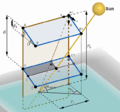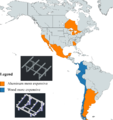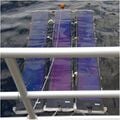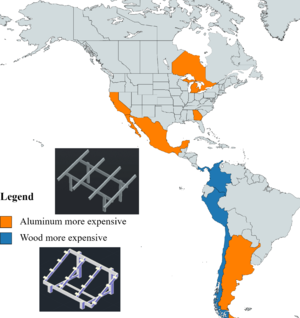
Open-source technological development is well-known for rapid innovation and providing opportunities to reduce costs and thus increase accessibility for a wide range of products. This is done through distributed manufacturing, in which products are produced close to end users. There is anecdotal evidence that these opportunities are heavily geographically dependent, with some locations unable to acquire components to build open hardware at accessible prices because of trade restrictions, tariffs, taxes, or market availability. Supply chain disruptions during the COVID-19 pandemic exacerbated this and forced designers to pivot towards a la carte-style design frameworks for critical system components. To further develop this phenomenon, a case study of free and open-source solar photovoltaic (PV) racking systems is provided. Two similar open-source designs made from different materials are compared in terms of capital costs for their detailed bill of materials throughout ten locations in North, Central and South America. The differences in economic optimization showed that the costs of wood-based racks were superior in North America and in some South American countries, while metal was less costly in Central and South America. The results make it clear that open hardware designs would be best to allow for local optimization based on material availability in all designs.
Source
- Rana, S.; Vandewetering, N.; Powell, J.; Ariza, J.Á.; Pearce, J.M. Geographical Dependence of Open Hardware Optimization: Case Study of Solar Photovoltaic Racking. Technologies 2023, 11, 62. https://doi.org/10.3390/technologies11020062 academia open access
- For designs, drawings, and calculations: https://osf.io/yx8mq/
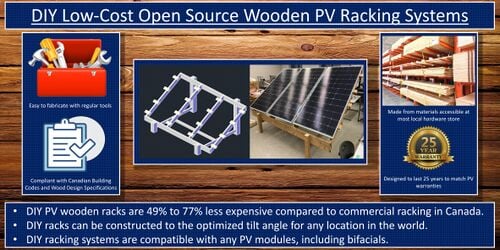
Keywords[edit | edit source]
Sustainable development; Open-source; Photovoltaic; Racking; racking; solar energy; biomaterials; wood; photovoltaic; mechanical design; balance of systems; renewable energy
See also[edit | edit source]
- To Catch the Sun
- 3-D printable photovoltaic module spacer
- Open source DIY solar photovoltaic racking
- Circular PV panel
Open Source Photovoltaic Racking Approaches[edit source]
- Ground-mounted
- Roof-mounted
- FPV
- Solar
- Papers
- Photovoltaics
- FAST
- SDG07 Affordable and clean energy
- SDG08 Decent work and economic growth
- SDG09 Industry innovation and infrastructure
- SDG11 Sustainable cities and communities
- FAST Completed
- Solar power
- Solar energy
- Sustainable development
- Mechanical engineering
- Open hardware
- Appropriate technology
- Energy
- Wood
- Renewable energy
- Open source
- Design









